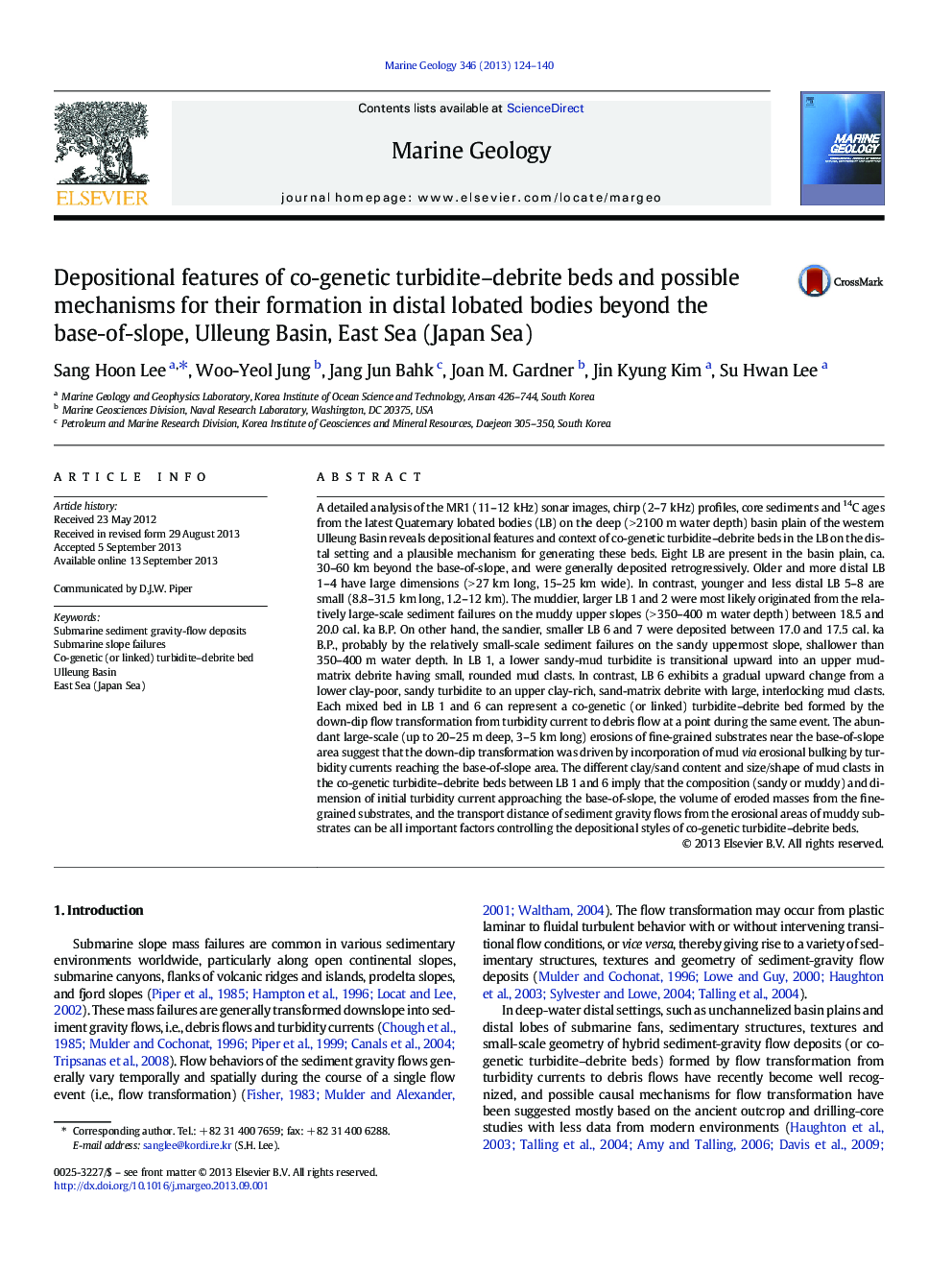| کد مقاله | کد نشریه | سال انتشار | مقاله انگلیسی | نسخه تمام متن |
|---|---|---|---|---|
| 4718369 | 1639106 | 2013 | 17 صفحه PDF | دانلود رایگان |

A detailed analysis of the MR1 (11–12 kHz) sonar images, chirp (2–7 kHz) profiles, core sediments and 14C ages from the latest Quaternary lobated bodies (LB) on the deep (> 2100 m water depth) basin plain of the western Ulleung Basin reveals depositional features and context of co-genetic turbidite–debrite beds in the LB on the distal setting and a plausible mechanism for generating these beds. Eight LB are present in the basin plain, ca. 30–60 km beyond the base-of-slope, and were generally deposited retrogressively. Older and more distal LB 1–4 have large dimensions (> 27 km long, 15–25 km wide). In contrast, younger and less distal LB 5–8 are small (8.8–31.5 km long, 1.2–12 km). The muddier, larger LB 1 and 2 were most likely originated from the relatively large-scale sediment failures on the muddy upper slopes (> 350–400 m water depth) between 18.5 and 20.0 cal. ka B.P. On other hand, the sandier, smaller LB 6 and 7 were deposited between 17.0 and 17.5 cal. ka B.P., probably by the relatively small-scale sediment failures on the sandy uppermost slope, shallower than 350–400 m water depth. In LB 1, a lower sandy-mud turbidite is transitional upward into an upper mud-matrix debrite having small, rounded mud clasts. In contrast, LB 6 exhibits a gradual upward change from a lower clay-poor, sandy turbidite to an upper clay-rich, sand-matrix debrite with large, interlocking mud clasts. Each mixed bed in LB 1 and 6 can represent a co-genetic (or linked) turbidite–debrite bed formed by the down-dip flow transformation from turbidity current to debris flow at a point during the same event. The abundant large-scale (up to 20–25 m deep, 3–5 km long) erosions of fine-grained substrates near the base-of-slope area suggest that the down-dip transformation was driven by incorporation of mud via erosional bulking by turbidity currents reaching the base-of-slope area. The different clay/sand content and size/shape of mud clasts in the co-genetic turbidite–debrite beds between LB 1 and 6 imply that the composition (sandy or muddy) and dimension of initial turbidity current approaching the base-of-slope, the volume of eroded masses from the fine-grained substrates, and the transport distance of sediment gravity flows from the erosional areas of muddy substrates can be all important factors controlling the depositional styles of co-genetic turbidite–debrite beds.
Journal: Marine Geology - Volume 346, 1 December 2013, Pages 124–140